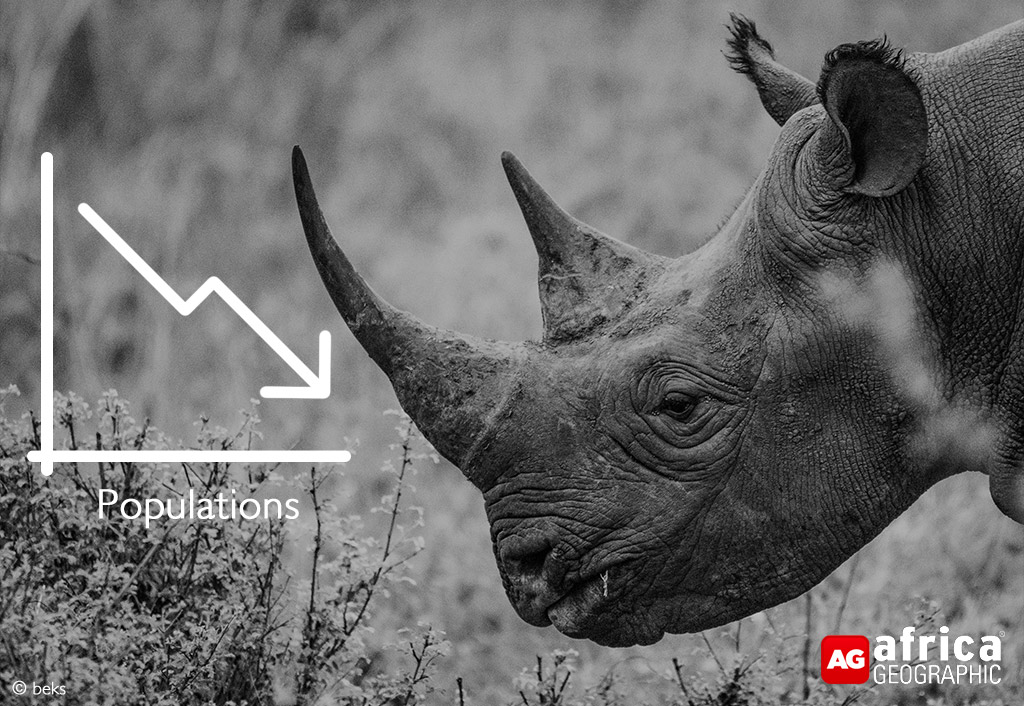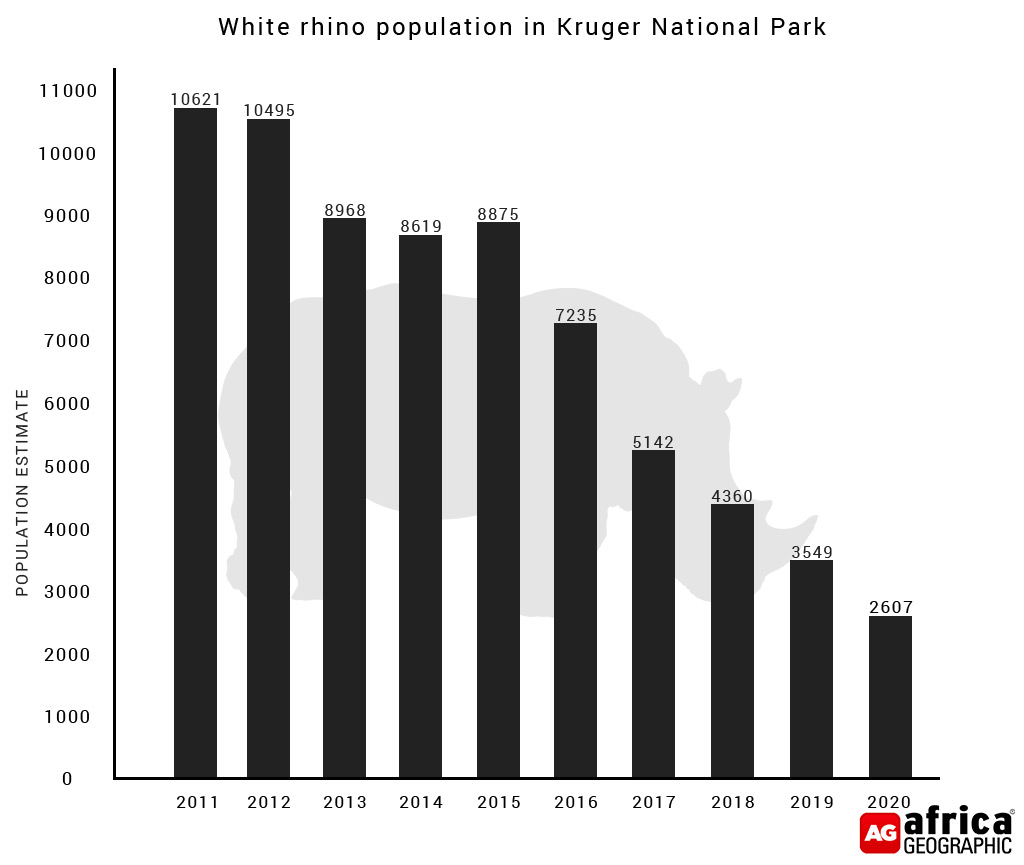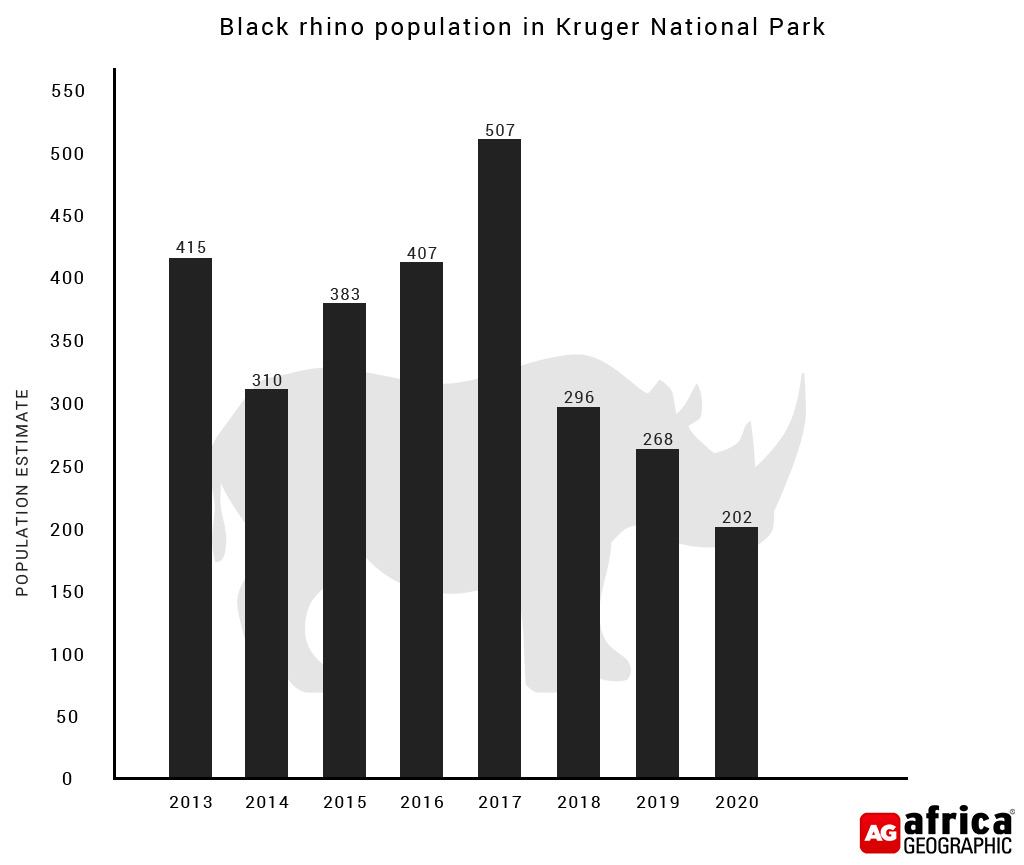
Despite back-breaking work from a dedicated and passionate SANParks team, Kruger National Park rhino populations have continued to plummet due to rhino poaching – as per the latest population count from 2020. Recently published research estimates that there are about 2,607 white rhinos remaining in the Kruger National Park, while black rhinos are estimated to number just 202. This represents a population decline of 75% for white rhinos since 2011 (from 10,621) and 51% for black rhino since 2013 (from 415).


The research, compiled by SANParks officials, analyses the impact of COVID-19 on poaching rates compared to trends observed in previous years. In summary:
- Population estimates in a massive area such as Kruger carry inherent uncertainty. Thus, white rhinos could number between 2,475 and 2,752, while black rhino populations could be as low as 172 or as high as 237. The estimates for this and previous years’ population numbers are the midpoint between the low and high numbers.
- The actual black rhino population size may be higher due to their preference for dense habitat and tendency for surveys to underestimate their numbers.
- These population estimates apply to the year 2020 – the process of actively counting the rhino (by air), analysing the data, and subjecting the results to scientific scrutiny takes time, and there is an inevitable lag period.
- During the height of the COVID-19 government-imposed “hard” lockdown, there was a significant reduction in poaching: 79.4%
- However, these benefits were lost as restrictions were lifted. “The easing of restriction resulted in a significantly higher number of observed poaching incidences per day during 2020 compared to that predicted for the same period by trends from 2017 to 2019. The result indicates that year-to-year poaching rates during 2020 were not significantly lower than those in previous years…” (Ferreira et al., 2021). This contradicts previous statements by the Department of Environment, Forestry and Fisheries, claiming that poaching incidents in Kruger reduced by half in the first half of 2020.
- The recruitment rates (the number of calves born that survive the year) for both species were at their lowest since 2013.
PUBLICLY AVAILABLE RESOURCES
- While the SANParks Annual Report for 2020/2021 is not yet accessible to the public, the most recent available figures were published in the African Journal of Wildlife Research and are publicly available through a paywall here.
- Our report of this time last year: Kruger rhino populations plummet – latest official stats
- The 2019 stats are available on page 96 of the 2019/2020 SANParks Annual Report: download.
- The 2018 stats are available on page 101 of the 2018/2019 SANParks Annual Report: download.
- Prior year stats are available here: white rhinos and black rhinos.
To comment on this story: Login (or sign up) to our app here - it's a troll-free safe place 🙂.![]()
HOW TO GET THE MOST OUT OF AFRICA GEOGRAPHIC:
- Travel with us. Travel in Africa is about knowing when and where to go, and with whom. A few weeks too early / late and a few kilometres off course and you could miss the greatest show on Earth. And wouldn’t that be a pity? Browse our ready-made packages or answer a few questions to start planning your dream safari.
- Subscribe to our FREE newsletter / download our FREE app to enjoy the following benefits.
- Plan your safaris in remote parks protected by African Parks via our sister company https://ukuri.travel/ - safari camps for responsible travellers






